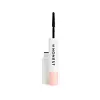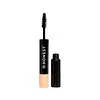What's inside
What's inside
 Key Ingredients
Key Ingredients

 Benefits
Benefits

 Concerns
Concerns

 Ingredients Side-by-side
Ingredients Side-by-side

Water
Skin ConditioningBeeswax
Emulsion StabilisingPotassium Cetyl Phosphate
EmulsifyingGlycerin
HumectantGlyceryl Stearate Se
EmulsifyingCopernicia Cerifera Wax
Castor Isostearate Beeswax Succinate
Skin ConditioningAcacia Senegal Gum
MaskingCellulose
AbsorbentGlyceryl Behenate
EmollientJojoba Esters
EmollientTocopherol
AntioxidantEthylhexylglycerin
Skin ConditioningCaprylyl Glycol
EmollientCetyl Palmitate
EmollientSorbitan Olivate
EmulsifyingSorbitan Palmitate
EmulsifyingXanthan Gum
EmulsifyingCaprylic/Capric Glycerides
EmollientSodium Benzoate
MaskingCellulose Gum
Emulsion StabilisingPotassium Sorbate
PreservativeSodium Phytate
Phosphoric Acid
BufferingCI 77499
Cosmetic ColorantGlyceryl Stearate
EmollientZea Mays Starch
AbsorbentCetearyl Alcohol
EmollientWater, Beeswax, Potassium Cetyl Phosphate, Glycerin, Glyceryl Stearate Se, Copernicia Cerifera Wax, Castor Isostearate Beeswax Succinate, Acacia Senegal Gum, Cellulose, Glyceryl Behenate, Jojoba Esters, Tocopherol, Ethylhexylglycerin, Caprylyl Glycol, Cetyl Palmitate, Sorbitan Olivate, Sorbitan Palmitate, Xanthan Gum, Caprylic/Capric Glycerides, Sodium Benzoate, Cellulose Gum, Potassium Sorbate, Sodium Phytate, Phosphoric Acid, CI 77499, Glyceryl Stearate, Zea Mays Starch, Cetearyl Alcohol
Water
Skin ConditioningPolyhydroxystearic Acid
EmulsifyingCopernicia Cerifera Wax
Dioctyldodecyl Dimer Dilinoleate
EmollientGlyceryl Stearate Se
EmulsifyingPolyglyceryl-6 Distearate
EmulsifyingPolyglyceryl-10 Stearate
Skin ConditioningStearic Acid
CleansingPropanediol
SolventHydrolyzed Corn Starch
HumectantCellulose
AbsorbentSilica
AbrasiveRicinus Communis Seed Oil
MaskingGlycerin
HumectantMicrocrystalline Cellulose
AbsorbentAloe Barbadensis Leaf Juice Powder
Skin ConditioningAlgin
MaskingXanthan Gum
EmulsifyingPanthenol
Skin ConditioningCitric Acid
BufferingTrisodium Ethylenediamine Disuccinate
Hydroxyacetophenone
Antioxidant1,2-Hexanediol
Skin ConditioningCaprylyl Glycol
EmollientCI 77007
Cosmetic ColorantPullulan
Sorbitol
HumectantAcacia Senegal Gum
MaskingTrehalose
HumectantCI 77499
Cosmetic ColorantWater, Polyhydroxystearic Acid, Copernicia Cerifera Wax, Dioctyldodecyl Dimer Dilinoleate, Glyceryl Stearate Se, Polyglyceryl-6 Distearate, Polyglyceryl-10 Stearate, Stearic Acid, Propanediol, Hydrolyzed Corn Starch, Cellulose, Silica, Ricinus Communis Seed Oil, Glycerin, Microcrystalline Cellulose, Aloe Barbadensis Leaf Juice Powder, Algin, Xanthan Gum, Panthenol, Citric Acid, Trisodium Ethylenediamine Disuccinate, Hydroxyacetophenone, 1,2-Hexanediol, Caprylyl Glycol, CI 77007, Pullulan, Sorbitol, Acacia Senegal Gum, Trehalose, CI 77499
Ingredients Explained
These ingredients are found in both products.
Ingredients higher up in an ingredient list are typically present in a larger amount.
Acacia Senegal Gum has skin soothing, thickening, and formulation stabilizing properties. It comes from the Acacia tree that is native to sub-Saharan Africa.
Caprylyl Glycol is a humectant and emollient, meaning it attracts and preserves moisture.
It is a common ingredient in many products, especially those designed to hydrate skin. The primary benefits are retaining moisture, skin softening, and promoting a healthy skin barrier.
Though Caprylyl Glycol is an alcohol derived from fatty acids, it is not the kind that can dry out skin.
This ingredient is also used as a preservative to extend the life of products. It has slight antimicrobial properties.
Learn more about Caprylyl GlycolCellulose is the main component of plant cell walls. It is used as an emulsifier, absorbent, and texture enhancer.
This ingredient has many functions:
Fun fact: Cellulose is the most abundant form of organic polymer on Earth.
Learn more about CelluloseCi 77499 is also hydrated iron III oxide. It is created from mixing red and black iron oxides. This helps give shades of darkness to a product.
Iron III oxides are classified as inorganic chemicals for coloring.
Copernicia Cerifera Wax comes from a palm tree native to Brazil; another name for this ingredient is Carnauba Wax.
This ingredient is used to thicken texture and also leaves behind a film when applied.
Fun fact: This wax has the highest melting point of all natural waxes and low solubility.
Learn more about Copernicia Cerifera WaxGlycerin is already naturally found in your skin. It helps moisturize and protect your skin.
A study from 2016 found glycerin to be more effective as a humectant than AHAs and hyaluronic acid.
As a humectant, it helps the skin stay hydrated by pulling moisture to your skin. The low molecular weight of glycerin allows it to pull moisture into the deeper layers of your skin.
Hydrated skin improves your skin barrier; Your skin barrier helps protect against irritants and bacteria.
Glycerin has also been found to have antimicrobial and antiviral properties. Due to these properties, glycerin is often used in wound and burn treatments.
In cosmetics, glycerin is usually derived from plants such as soybean or palm. However, it can also be sourced from animals, such as tallow or animal fat.
This ingredient is organic, colorless, odorless, and non-toxic.
Glycerin is the name for this ingredient in American English. British English uses Glycerol/Glycerine.
Learn more about GlycerinGlyceryl Stearate Se is a self-emulsifying (SE) form of glyceryl stearate. Self-emusifying means this ingredient automatically blends with water. It is an emulsifier, emollient, and cleansing agent.
As an emulsifier, Glyceryl Stearate Se prevents ingredients such as oil and water from separating. It is also a surfactant, meaning it helps cleanse the skin. Surfactants help gather oil, dirt, and other pollutants so they may be rinsed away easily.
Emollients help your skin stay smooth and soft. It does so by creating a film on top of the skin that helps trap moisture in.
Learn more about Glyceryl Stearate SeWater. It's the most common cosmetic ingredient of all. You'll usually see it at the top of ingredient lists, meaning that it makes up the largest part of the product.
So why is it so popular? Water most often acts as a solvent - this means that it helps dissolve other ingredients into the formulation.
You'll also recognize water as that liquid we all need to stay alive. If you see this, drink a glass of water. Stay hydrated!
Learn more about WaterXanthan gum is used as a stabilizer and thickener within cosmetic products. It helps give products a sticky, thick feeling - preventing them from being too runny.
On the technical side of things, xanthan gum is a polysaccharide - a combination consisting of multiple sugar molecules bonded together.
Xanthan gum is a pretty common and great ingredient. It is a natural, non-toxic, non-irritating ingredient that is also commonly used in food products.
Learn more about Xanthan Gum